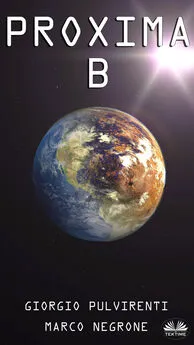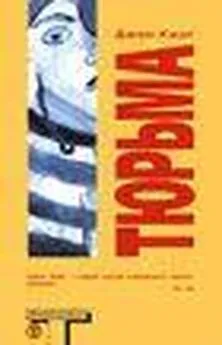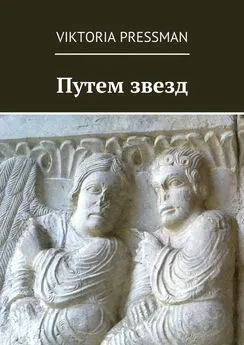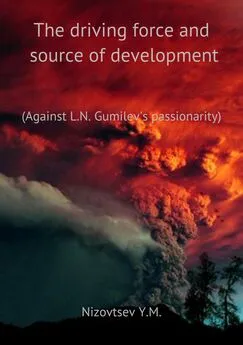Pulvirenti Giorgio - Proxima B
- Название:Proxima B
- Автор:
- Жанр:
- Издательство:неизвестно
- Год:неизвестен
- ISBN:нет данных
- Рейтинг:
- Избранное:Добавить в избранное
-
Отзывы:
-
Ваша оценка:
Pulvirenti Giorgio - Proxima B краткое содержание
Proxima B - читать онлайн бесплатно ознакомительный отрывок
Интервал:
Закладка:
“Can we try it, Sir? Please!” Korin requested. He hoped to see the machine working.
“Of course, kid! But only in order to demonstrate what it can create,” the professor replied, then he turned to the machine and started it; he was tinkering with the holographic display in order to find a species whose recreation would take only a few minutes.
“Hmm, here it is. This one should be a proper one!” the doctor exclaimed. He started the machine and begged the group to keep away and for a little patience until a living being would be released at the bottom of the particular contraption.
“CREATION LIVING BEING FIVE MINUTES LEFT,” the automated voice informed.
“Professor, do all the creatures need the same time of creation or rather it changes according to the species?” a German member of the group of biologists asked him.
“The time of creation changes according to the species and the dimension. The machine has to be powered by chemical substances so that tissues can be synthesized and the living being can develop, you know,” Doctor Preparata explained.
“CREATION COMPLETE. PROCESS OVER SUCCESSFULLY”.
They had been informed once again that the process had been carried out successfully.
“Look. It’s ready!” the doctor exclaimed enthusiastically. Then he opened the compartment at the bottom of the machine and pulled out what looked like a big coleopteran.
“This is a titan beetle,” he explained proudly. Then he handed the specimen of insect over to Korin, who seemed almost afraid of the new animal at first, but after being reassured by the doctor, he held it willingly.
“We shall do great things together! We only have to want it, my lads! Life needs nothing but a thrust, then it will find its way forward! You only have to want it. Remember that!” the Italian biologist concluded. Then he released the animal into his custody and before saying goodbye to them all, he informed them about the next things to do, including the directions for using the machine that they would need shortly.
The group of engineers used to meet very early, but it was not a problem at all for many of them, including David. That morning they would start studying and being familiar with the new tools that they would have to use on Proxima B for establishing new buildings. After having their usual breakfast at the common table (they used to go there first), they talked a little with the other guests of the complex, and David and his group found themselves within the building no. 1 where the training would begin. They, too, would have at their disposal a device similar to a handheld to take notes, read and study the information that their superiors, including a man of Indian origin called Dinkar Kanak, who was one of the most important people in the world in the field of architectural engineering, would transmit to them. Kanak was a rather short and half-bald man in his sixties; he used to wear a pair of thin glasses that, most of the time, he allowed falling down on his nose. Most of the time, he used to walk by dragging his left leg due to a bone disease. Yet, he maintained his sense of humor throughout – all in all, a person that may have looked funny at first, but instead he was an inexhaustible source of resources. Powell had desired him so keenly that one of the engineers that took part in the realization of the whole complex of the Rocky Mountain National Park as well as the owner of the company that produced particular 3D printers that could build buildings in no time by using zero-impact products. David and Giovanni were together with their group of twenty-five engineers. They were sitting in their own places, waiting for their superior to explain the situation. Kanak appeared before the front door of the hall, that is the same door through which the other people had come, and he was accompanied by two other uniformed men that were his assistants.
“Good morning, gentlemen,” he said with his unequivocal French accent.
The engineers said good morning to Kanak, who immediately took his seat behind his writing desk.
“So, as I mentioned yesterday, what we’re seeing this morning is the structure of our kiddo in detail and how to obtain the highest efficiency from it. After you!”
Kanak asked the two assistants to introduce the machine that was leaned on a movable table behind a marquee. As soon as they uncovered it, that particular 3D printer appeared.
“Here it is! Our own Engineer X!” the Indian engineer cried out while introducing his creation enthusiastically to the pupils. The curiosity of David, Giovanni and many other colleagues of theirs was aroused as soon as they saw that weird machine despite most of them had already had to deal with similar instruments during their own works.
“Start being familiar with it, since it’s with it that you’re spending most of your time on Proxima B, even if this a reduced sample. The models that you are using on the planet are much bigger,” the professor explained. Then he kept on saying, “But they work exactly like the one you are seeing right now. And even the raw material that we’re using there is the same! Some samples even more reduced of Engineer X are to appear in front of you!”
While Kanak was still speaking, from their own desks all the engineers could see appear a 1:50 scale model reproducing the machine.
“That’s it, gentlemen! All you have to do is not difficult to explain. You’ll have to assemble and make a 1:100 scale model reproducing a building that is similar to the one that you’re going to erect on Proxima B!”
David and his fellow engineers paid attention to what they were ordered as they were busy watching the particular printer. One of them, a certain Bryan Stone asked his professor, “Excuse me, Professor, and what about the material that we’re going to use?”
“That’s a very good question, Mr. Stone! I was about to explain exactly that point!” Kanak cried out. These words caught the attention of those who were there, whose eyes were now upon him.
“What is peculiar to this special machine is the fact that it works with waste material only,” he specified.
They began to hum in their soft voices. The professor did not care so much about that hum at first. He turned round, pushed a button on a remote control and a big holographic display appeared behind him and showed the internal structure of the machine on one side and a list of materials on the other side.
“This outline, which you can find in your own devices, clearly explains how the printer works. As you can see, all our waste, including cans, plastic and glass, are put into this sort of funnel.”
While Kanak was speaking, his two assistants were showing concretely how to carry out the process.
“Once all our waste is inside, all the material is ready for being collected in this particular tank and undergoing a process of molecular alteration that, after compaction, results in a new form of state-of-the-art composite material. We call it ?the clix?”.
The printer next to Kanak’s writing desk let each clix filament flow out of particular hoses that were being positioned by peculiar arms in order to compose the model that would be built.
“Amazing!” David cried out while he was sitting next to Giovanni that, for his part, kept on watching the printer compose the pattern.
Suddenly Giovanni himself raised his hand. He needed to ask something. The Italian engineer’s requirement was immediately fulfilled.
“Please, go ahead, Mr. Rinaldi!”
“Sir, I was wondering what models of houses and buildings we should compose.”
Kanak stopped for a while.
“That’s a good point! I guess I’ll turn this over to my assistant, Mr. Ward!”
So, Kanak’s assistant was given the floor.
“We have already loaded fifteen different samples of houses and ten different models of buildings within the software. You ought to know that we have monitored your work over the last few years and we have finally mixed your best buildings in order to get a city that we could define as ideal,” he explained as he pushed a button on the remote control in order to scroll through some images on the holographic display behind him.
Then the representation of the model of a dwelling on Proxima B appeared.
“Behind me you can see a prototype of a dwelling on the new planet,” Jim Ward explained once more. It was a one-story house whose area was almost nine hundred square feet; it had a sloping roof and a small garden was all around.
“Almost nine hundred square feet in one story! The kitchen, the living room, one bathroom and one bedroom,” the assistant added.
“And there’s more! Near each house, a garden with certain types of plants will be tended by each inhabitant; on the back side of the house, a small vegetable garden will be tended in order to have something for one’s own livelihood and, if necessary, to help the community!” he concluded.
The engineers were all dumbfounded. But David had to ask something that had been gripping him since their superiors had showed them all the shape of the dwellings and how to make them work.
“Sir Garcia!” Kanak said, inviting David to ask his question.
“Sir, I was wondering how the system of water supply works on Proxima B,” he said.
“Please, Alan!” the professor said, inviting his assistant to explain in his place.
“Every dwelling is being equipped with a special machine for purifying water so that the whole community is not obliged to deprive itself of its own. The whole thing is being monitored by particular tools and no water will be wasted. Actually, nothing else will ever be wasted,” Alan Mose explained.
“Well, gentlemen! I shall go straight to the point, now. It is time for you to work. Let me see what you can do. Come on!” he incited them.
Professor Kanak invited the engineers to start their process of creation of the prototypes of the buildings. David could not wait to start his new device.
“Are you immune to physical diseases on Earth? Neither are you in space, where you will likely suffer from osteoporosis, space nausea, muscle and bone mass loss, heart diseases, space blindness or diabetes due to solar storms and space radiations. What I’ve just mentioned is just a part of the dangers you may encounter,” Doctor Ezekiel Phin informed us. His voice, which was almost raspy, resounded through the room where he, who was the head of the London Clinic Centre as well as one of the world’s leading experts on neurodegenerative diseases, was together with the members of the Medical Division of the expedition in a large hall surrounded by a dark atmosphere due to Doctor Phin’s necessity of resuming his lesson in a low-light environment.
“We hadn’t ever traveled so far before. Of course we’ve been on Mars and it took us six months to understand we were not able to colonize it, but it won’t happen this time. The travel will have to be eight times longer and we will need the best doctors, nurses and medical experts to succeed. So, that’s why you are here!” Ezekiel cried out. He gazed at the audience and paused for a while before pointing at a hologram representing an X-ray of a human femur behind him and asking, “What can you see here?”
Somebody raised their hands up and he began to call them out one by one.
“Stand up, please, and let us know who you are and what you think about this figure!” the professor cried out, referring to a young brown-haired girl.
“Hello, everyone, I’m Justine Poirot, I come from France and I’m a specialist in orthopedics and traumatology. I can firmly say that what we are seeing here is the image of a femur of a woman in her sixties suffering from severe osteoporosis,” the girl replied with self-assurance, being sure of her answer.
Читать дальшеИнтервал:
Закладка:






![Андрей Подшибякин - Время игр! [Отечественная игровая индустрия в лицах и мечтах: от Parkan до World of Tanks] [litres]](/books/1074375/andrej-podshibyakin-vremya-igr-otechestvennaya-igrova.webp)
